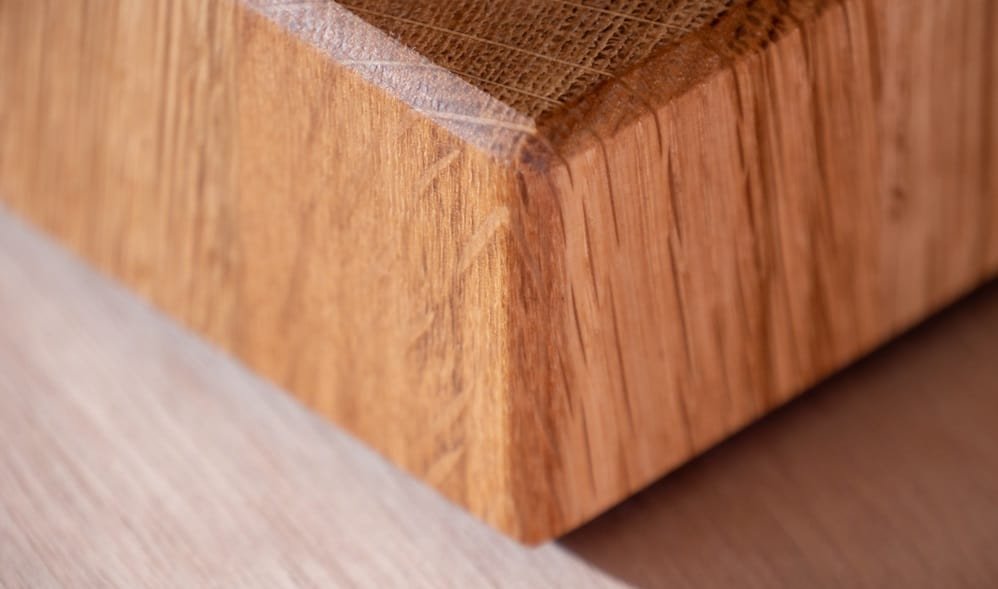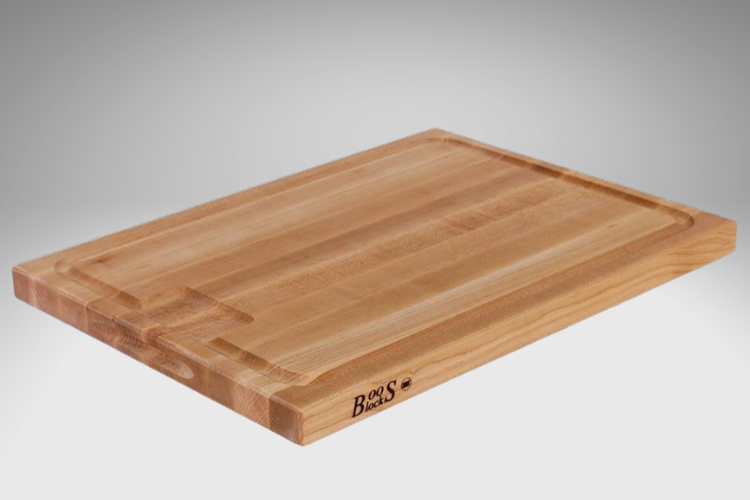If you are in the market for a wooden cutting board, one of the critical decisions you have to make is the Grain of the wood used to make the board. The wood grain determines the price of the cutting board. It also determines the most appropriate use of the cutting board. It may also determine if it has a dulling effect on your knives and shows you the most appropriate maintenance technique.
This article compares end grain vs. edge grain boards, their pros and cons, and when each is most suitable. But first, let’s take a brief look at the difference between end grain, face grain, and edge grain in a piece of wood.
I got a John Boos Cutting Board as a gift, and it is worth the hype; it is a very sturdy, beautifully crafted board that I recommend. I purchased the oil and cleansing products to go with it to maintain and preserve the wood.
End Grain vs. Edge grain vs. Face Grain
The grains refer to the part of the wood used to make your cutting board. Typically, once trees are harvested, they are cut into lumber used to make different things.
If you have a piece of wood, think of the top as the face grain, length as the edge grain, and width as the end grain. In terms of appearance, the end grain part of the wood is the most distinctive as it is the side where the growth rings are.
The face grain is mainly used to make tabletops and serving boards, while end drain wood and edge grain wood are the most commonly used for butcher countertops, butcher blocks, and cutting boards. Below is a comparison between end and edge grain cutting boards.
End Grain Cutting Boards
End grain cutting boards are easily identifiable. They have a distinctive checkered design on top. Most are round-shaped, although some are square or rectangular.
Making an end-grain cutting board is more elaborate than making edge grain boards. The strips are cut to the approximate thickness of the board. Therefore, they are many pieces to glue together, requiring more labor.
These types of cutting boards are more durable and warp-resistant. They are thicker than edge grain blocks, so they withstand pressure better. Since the top is made of soft and fibrous wood parts, it is gentler on the knife. Therefore, end drain cutting boards do not cause your knife to be dull.
The open-wood cell structure of the end grain also provides a better grip on the knife when slicing, making it suitable for use with slimy and slippery foods. Although the knife may cause scratches and dents when cutting, they fade over time. This part of the wood is quick healing.
On the downside, end-grain cutting boards are pretty expensive. They can be up to 15 times more expensive than edge grain boards. They are also heavy and bulky, making them unsuitable if you need to move your board frequently. Another con is that they absorb moisture quickly, requiring regular conditioning and seasoning with food-grade mineral oil to prevent water clogging, mold, and bacteria.
Edge Grain Cutting Boards
These are made by gluing long strips of wood together as if constructing butcher block countertops or bowling alley flooring. As such, the top has a straight parallel design.
These boards can be made from one type of wood or a combination of different woods. They are often made using hardwoods such as hard maple. They are better looking than their end grain counterparts.
They are slimmer and lighter than end-grain cutting boards. There is a wide variety available in the market, and most are affordably priced as they are easier to make.
The main con of the edge grain cutting boards is that they cause your knives to get dull. The boards are also prone to scratches and dents. Since this part of the wood is not self-healing, the knife marks, dents, and scratches become prominent over time, compromising the cutting board’s aesthetics. If the dents and scratches are deep, they accumulate dirt and water, making them hard to clean.
However, with proper care and maintenance, you can keep your edge grain cutting board looking good through regular oiling and resurfacing to restore the butcher block completely.
Most Suitable Uses
Below are the circumstances under which an end grain cutting board is most suitable:
- If you are using it for ingredients with low moisture content like raw meat, cabbage, broccoli, etc.
- For tasks that require a lot of pressure, e.g., splitting up bones or carving meat
- If you want to keep your knife blade sharp for long or if your knives have poor edge retention
- You do not mind regularly oiling your board.
On the other hand, an edge grain cutting board is most suitable:
- If you are preparing juicier ingredients like fruits and vegetables
- You want a light cutting board for easy storage and portability
- You are looking for a budget-friendly cutting board
- You do not mind sharpening and honing your knives regularly
In Conclusion, Which is Better, End Grain or Edge Grain Cutting Boards?
Is an edge grain board better than an end grain board and vice versa? It depends on what you are looking for and your preference.
Face grain cutting boards are made by gluing the edges of narrow boards of wood together. Edge grain is the “side” of the board. It’s usually the side where woodworkers measure the “thickness” of a board. Finally, the end grain is the end of the board.
As discussed above, each type of board has specific pros and cons that make them suitable for particular uses. Therefore, assess your needs and choose the type of wooden cutting board that best fits.
Last Updated on June 20, 2023 by John Siracusa









